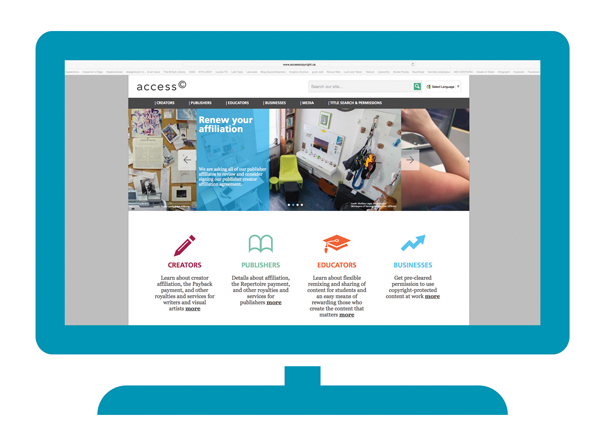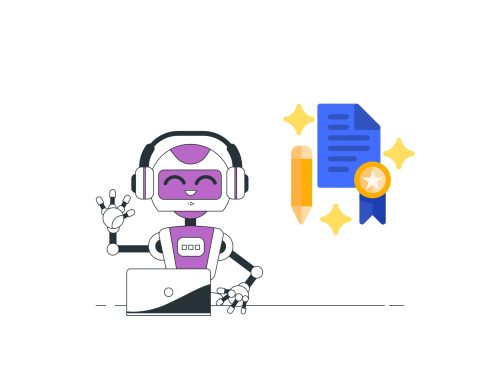Access Copyright has the infrastructure and expertise to best serve universities, says the organization’s Executive Director Roanie Levy.
When photocopiers became widely available in the late 1970s and early 1980s, people’s ability to use and interact with print media was completely transformed. The printing press, more than 500 years after Gutenberg, had finally come face-to-face with a disruptive technology.
Suddenly we could conveniently copy a publication more cheaply than we could buy it, and we could deconstruct bound volumes to make use of specific parts. Any title we could put our hands on could be subdivided, remixed, and reproduced for little more than the cost of paper and carbon. A world of print had been unlocked to new uses.
“Gutenberg made everybody a reader; Xerox makes everybody a publisher.”
-Marshall McLuhan (in 1977)
Those uses had particular appeal in education, where teachers gained the option to curate resources for their students. And it was in this context that the members of Canada’s Book and Periodical Council, an umbrella group of Canadian creator and publisher associations, gathered to form Access Copyright in 1988.
There was no turning back on photocopying—the social benefit of convenient, flexible content uses for educators and students was undeniable. From the beginning, Canadian creators and publishers have sought to be part of the dialogue around changing uses and demands by responding with a pragmatic licensing solution for educational users rooted in our common interests in quality education and quality Canadian content for use in education.
Access Copyright’s licences provide faculty the option to conveniently ‘micro-publish’ tailored, cost-effective course collections for students, while ensuring reasonable rewards for the creators of the content sources that support their teaching.
Since 2002, licensed usage has lead to royalty payments on more than 280,000 unique titles, the vast majority of them used in education. Since 1988, more than $400 million has flowed back to creators and publishers. A recent PricewaterhouseCoopers study found that the loss of these royalties would amount to a 20 per cent decline in the income an average creator earns from their work. For many, these royalties may be the difference between being a writer and not being able to continue to write.
There’s no question that the content and copyright landscapes have changed since 1988, but in many ways we face some similar challenges today. When content moves over digital networks so effortlessly, it’s often followed by the thought that it is, or should be, free. At these times, it is helpful to remember that the value of high-quality published works never resided in the paper and glue. Over the past decade content use in postsecondary education has been migrating away from centrally managed bookstores and print shops towards more customized solutions targeting student needs on digital platforms such as Learning Management Systems, where it continues to support student success.
Today, library e-subscriptions, Open Educational Resources, and Open Access journals have also become an increasingly significant part of the mix. However, these things do not represent the full spectrum of sources relied on by teaching faculty. Educators continue to need high quality, professionally produced educational content not covered by library subscriptions or open licences—and that is where Access Copyright can help in unique ways.
Access Copyright’s licences provide pre-authorized permission to copy portions of most of the titles published in Canada and 28 other countries. That’s over twelve thousand creators and publishers here in Canada, and many more through our agreements with collectives in other countries.
Unfortunately, many universities are now forgoing this existing infrastructure, which offers cost-effective permission clearances on millions of titles, in favor of building their own, internal permissions infrastructure and relying on contested interpretations of the fair dealing exception.
This means funds that might have been spent on a licence that offers the broadest permissions to the most people, while reinvesting in the content sources that faculty and students value, are instead flowing into administration infrastructure and costly, labour-intensive permissions processes with much narrower benefits both for the university and content creator communities.
The fair dealing content usage guidelines advanced by the Council of Ministers of Education, Canada (CMEC) and Universities Canada, as well as the various iterations adopted at universities, are a crude yardstick for making complex judgements around what should be a more contextual assessment. Not surprisingly, creators and publishers have concerns about this, but so do many teaching faculty and librarians.
Nothing in the new Copyright Act or court decisions suggests fair dealing is as simple or as well defined as being able to use anything below a specific percentage. Faculty and librarians find themselves in an awkward position between a limited capacity to clear permissions and guidelines that effectively download responsibilities to the individual faculty members who must rely on those permissions.
There has been an unfortunate breakdown in understanding and communication between Access Copyright and many universities. This needs to change. Renewing Access Copyright’s partnership with the education sector remains vitally important to Canadian creators and content producers and to all those who read, teach, research, and learn.
We have reached out to these communities and invited feedback from teachers, librarians, and administrators. We listened to their concerns and their desire for change and committed to a top to bottom transformation to reinvent Access Copyright in the service of our customers. We will continue to invite dialogue and strive to better understand the copyright management needs of educators.
That commitment was demonstrated at the last Access Copyright Annual General Meeting when, for the very first time, our members reached outside their creator and publisher communities and elected two academic librarians and a leader in public K-12 education as board directors.
We recognize the efforts many institutions have made in the areas of content dissemination and the centralized administration of e-subscriptions. This has led to the launch of a new set of licence offerings, developed with input from institutions, and designed to provide better convenience, value, and flexibility.
The CHOICE Licence provides more flexibility and pay-per-use pricing for paper and digital uses. The PREMIUM licence offers more comprehensive coverage and permissions clearance services at a price of $12 per student for a five-year licence.
Notwithstanding disagreements about fair dealing, we believe many institutions will find value in either the PREMIUM or CHOICE licences. These new lower prices are a sincere attempt to find ways to continue working with the education sector.
In the longer term, we are working to further enhance our offerings through the development of tools that help simplify the discovery, selection, management, integration of content, and associated permissions with e-Learning environments. We are working on pilots and trials to better understand user needs around the integration of copyright clearance and content access tools with digital platforms in order to bring content directly to educators, students, and researchers on the platforms they already use.
Access Copyright has the infrastructure, expertise, and rights to be of service to universities. However, we need to re-engage in a dialogue to properly understand how we can help. It’s time we moved past disagreement and distrust and reconnect on common ground. Our librarians, faculty, and students deserve better. Our creators and publishers deserve better.











